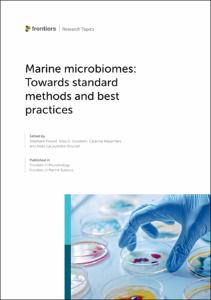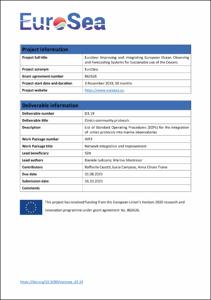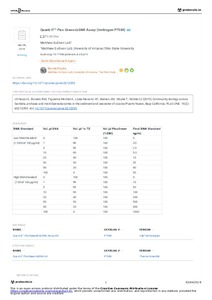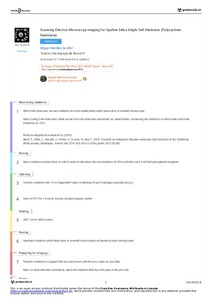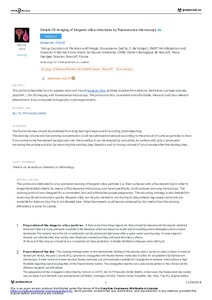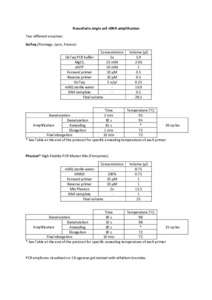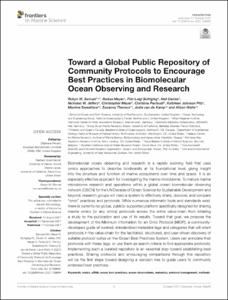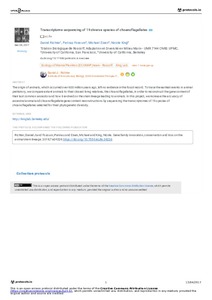Browsing ⇒ OBON: Ocean Biomolecular Observing Network by Title
Now showing items 13-22 of 22
-
Marine microbiomes: Towards standard methods and best practices.
(Frontiers Media SA, Lausanne, Switzerland, 2023)The microbiome is key to understanding and sustaining the services that ocean ecosystems provide (Bolhuis et al., 2020). The marine microbiome—an ensemble of microscopic organisms that inhabit water columns, sediments, ... -
Microscope video recording.
(Station Biologique de Roscoff, Roscoff, France, 2019)Protocol to record videos on SBR Microscope. -
Omics community protocols. EuroSea Deliverable D3.19.
(EuroSea Project, , 2023)The aim of the WP3 “Network Integration and Improvements” is to coordinate and enhance key aspects of integration of European observing technology (and related data flows) for its use in the context of international ocean ... -
A practical guide to DNA-based methods for biodiversity assessment.
(Pensoft Advanced Books, Sofia, Bulgaria, 2021)This book represents a synthesis of knowledge and best practice in the field of DNA-based biomonitoring at the time of writing. It has been written with end-users of molecular tools in mind, as well as those who are new ... -
Quanti-iT™ Pico Green dsDNA Assay (Invitrogen P7589).
(Matthew Sullivan Lab, University of Arizona/Ohio State University, Tucson, AZ, 2019)This protocol accompanies the following publication: Ul-Hasan S, Bowers RM, Figueroa-Montiel A, Licea-Navarro AF, Beman JM, Woyke T, et al. (2019) Community ecology across bacteria, archaea and microbial eukaryotes in the ... -
Scanning Electron Microscopy imaging for Opaline Silica Single Cell Skeletons (Polycystines Radiolaria). Version 3.
(Station Biologique de Roscoff, Roscoff, France, 2018)Protocol adapted from: Biard, T., Pillet, L., Decelle, J., Poirier, C., Suzuki, N. and Not, F. (2015) Towards an Integrative Morpho-molecular Classification of the Collodaria (Polycystinea, Radiolaria). Protist 166, ... -
Simple 3D imaging of biogenic silica structures by fluorescence microscopy. Version 2.
(Station Biologique de Roscoff, Roscoff, France, 2018)This protocol describes how to prepare, stain and mount biogenic silica particles (opaline from diatoms, Radiolaria, sponges spicules, phytolith...) for 3D imaging with fluorescence microscopy. The protocol is fast, ... -
Single cell rDNA amplification of Nassellaria (Radiolaria).
(Station Biologique de Roscoff, Roscoff, France, 2018) -
Toward a Global Public Repository of Community Protocols to Encourage Best Practices in Biomolecular Ocean Observing and Research
(2021)Biomolecular ocean observing and research is a rapidly evolving field that uses omics approaches to describe biodiversity at its foundational level, giving insight into the structure and function of marine ecosystems over ... -
Transcriptome sequencing of 19 diverse species of choanoflagellates.
(Station Biologique de Roscoff, Roscoff, France, 2017)The origin of animals, which occurred over 600 million years ago, left no evidence in the fossil record. To trace the earliest events in animal prehistory, we compare extant animals to their closest living relatives, the ...
 Repository of community practices in Ocean Research, Applications and Data/Information Management
Repository of community practices in Ocean Research, Applications and Data/Information Management
